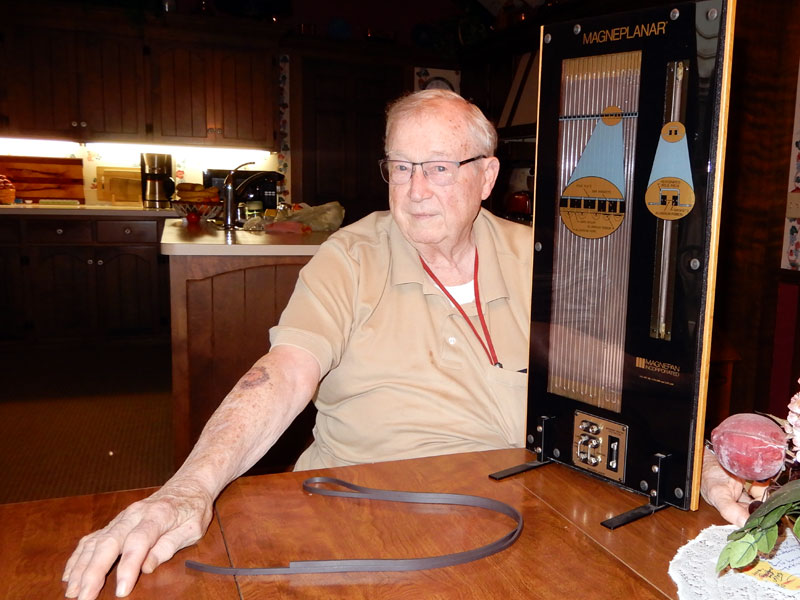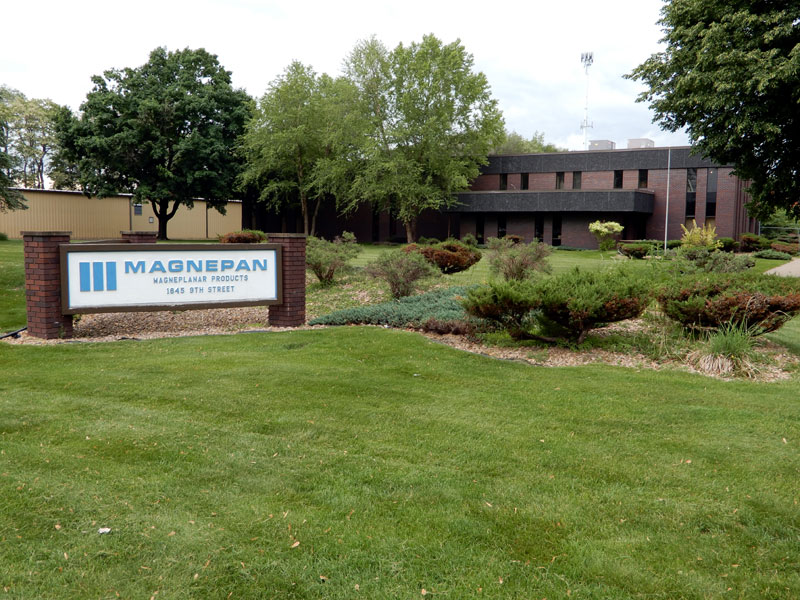James Winey, 1934-2024
e at The Audio Beat were saddened to learn that Jim Winey, founder of Magnepan and inventor of the planar-magnetic speaker, died on January 10, 2024. He was 89. I was fortunate to spend time with Jim Winey and his family on a couple of occasions, and in memorializing him now, I will quote directly from an earlier article I wrote, on Magnepan's fiftieth anniversary. This firsthand account gives a better understanding of him and the company he created than any comments I could compose anew.
Jim was the proverbial Iowa farm boy whose curiosity and resourcefulness were natural for engineering, a degree in which he received from Iowa State. Winey was also a music lover, hi-fi buff and tinkerer for many years before Magnepan’s inception. His son Mark Winey told me, “He was an audiophile. I have distinct memories of the same song being played over and over” -- the demo material with which he evaluated his audio creations. “He was always building kits and cobbling speakers together.” But not just any speakers. From the beginning, Winey wasn’t following the well-trod road of building dynamic speakers with separate drivers for each frequency range, all mounted in a wooden cabinet. “I do not remember any box speakers in our house,” Mark Winey said. Instead, Jim Winey experimented until he devised and built his driver, which was truly revolutionary. What made it so was the concept behind it. It reimagined the technology of dynamic drivers, using it to drive a panel instead of a cone. Magnepan planar-magnetic speakers -- Magneplanars, as they've come to be known -- are most often compared to electrostatic speakers. The two are alike only in the sense of the panel from which the sound emanates. The drive technology is completely different, and, in the case of Magnepans, requires no separate AC power. From the very beginning, listeners noticed and commented on the speed and lack of boxy colorations of Magnepan speakers, both of which were completely understandable. The planar-magnetic panels were made of mylar and thus incredibly low in mass compared to dynamic cones, which at that time were made of a heavy doped paper. The lack of similar mass imparted that sense of speed. Of course, Magnepan speakers had no cabinets, so there was no source of boxy colorations. The purity of the sound of Magnepan speakers was a distinct sonic advantage, and it remains so to this day. Starting a business requires capital, and Jim Winey raised it the old-fashioned way: by asking friends and family, thirty of whom funded Magnepan’s launch. Winey used a prototype speaker he built himself to help convince them all, each of whom was paid back “several times over,” according to him, for their initial investment. Magnepan’s first home was in an industrial part of White Bear Lake, a northeastern suburb of Minneapolis, sharing a building with an auto-repair shop. Through shrewd business decisions, the most important of which was handing distribution of Magnepan speakers over to William Z. Johnson, who had launched Audio Research around the same time and was more prominent in the audio industry, Magnepan grew, first buying out the repair shop’s space, then, less than ten years after the company’s launch, constructing the building that is its current home.
During the late 1970s and throughout the 1980s, Magnepan was wildly successful. "My timing was very good," Jim Winey said. Much of the company's growth boiled down to the consistency of Magnepan's philosophy for pricing its products, which begins with the cost to manufacture and adds "a reasonable profit," according to Winey. There were many months during that stretch of time when Magnepan was building and shipping over a thousand pairs of speakers, which created huge cash flow -- up to $100,000 a month. In total, over the course of its fifty years in business, Magnepan has shipped "way over 200,000 pairs of speakers," according to Winey. They are the only esoteric high-end speakers I've seen in thrift stores, and the company still refurbishes most models produced, including the multi-panel Tympani-series speakers, which audiophiles continue to prize. Jim Winey also designed the first large-scale ribbon tweeter, a driver the company still uses in its upper-end models, and he reminded me of another of his designs: "You are aware that we used to manufacture a tonearm, right?" That would be the Magnepan Unitrac, which sold for $299. Winey believed that the weak link in the analog-playback chain was the tonearm, so he decided to do something about it and design his own. "We sold just over 10,000 of them," he told me. I'm hoping to find one, still in the box, in a thrift store. The challenges of selling
high-end speakers have changed and increased since the 1980s. Mark Winey, Magnepan's
current CEO, told me that he spends $70,000 a year on insurance, "just to keep the
doors open." There are more things to occupy people's time, and they have cut in to
high-end audio's market. Sales and distribution have changed, with so many
brick-and-mortar dealers closing and so many audio products sold factory direct.
Throughout this upheaval, Magnepan has stayed true to its way of doing business. New
Magnepan speakers often seem ridiculously low in price, the product of that longstanding
and unchanging pricing philosophy, and the company continues to doggedly support its
network of dealers, most recently with a tour of all in North America to demonstrate the
flagship 30.7 ($30,000 per pair), an old-school approach for the new millennium. |


